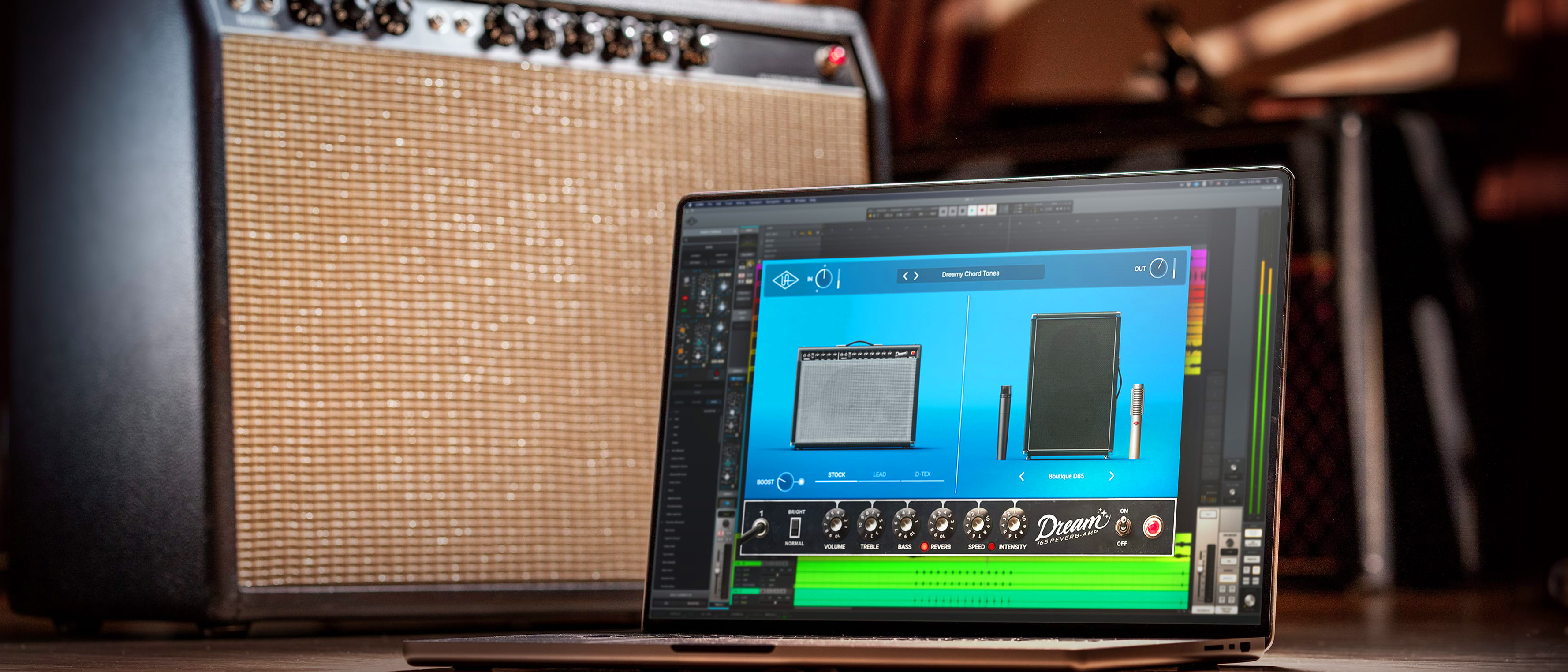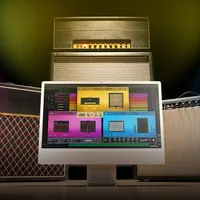Guitar World Verdict
All the tonal delights of UA's amp pedals with a friendlier user experience make these the greatest plugin versions of three of the greatest tube amps in history. Just don't pay the steep full retail prices, ok?
Pros
- +
Hugely impressive modelling of three classic vintage amps.
- +
Intuitive, simple user interface.
- +
Presets offer great jump-off points for dialing in tones.
Cons
- -
At full price, they are very expensive.
- -
Need to be launched through a DAW.
- -
No Unison versions for Apollo users… yet.
You can trust Guitar World
Universal Audio UAD Amp Plugins: Need to know
These names seem familiar – weren't they pedal amps?
Yes, all three of these guitar plugins started out as hardware releases in the UAFX range – the Dream and Ruby were part of the company's first pedal amp 'emulator' releases, while the Lion '68 came later. So instead of UA software inspiring a pedal release, it's actually the other way around here. The algorithms are the same.
Do these have the same options as the pedals?
Yes, so if you're familar with the 1965 Fender Deluxe Reverb (Dream), 1963 Vox AC30 Top Boost (Ruby) and Marshall late '60s Super Lead / Super Bass Plexi recreations on those pedal amps, you'll very quickly feel at home here. And even if you're not, the interfaces are set up like the amps – but with added benefits. Extra mod options like boosts, bright switches and also six speaker emulations based on favourites from the respective amps' histories.
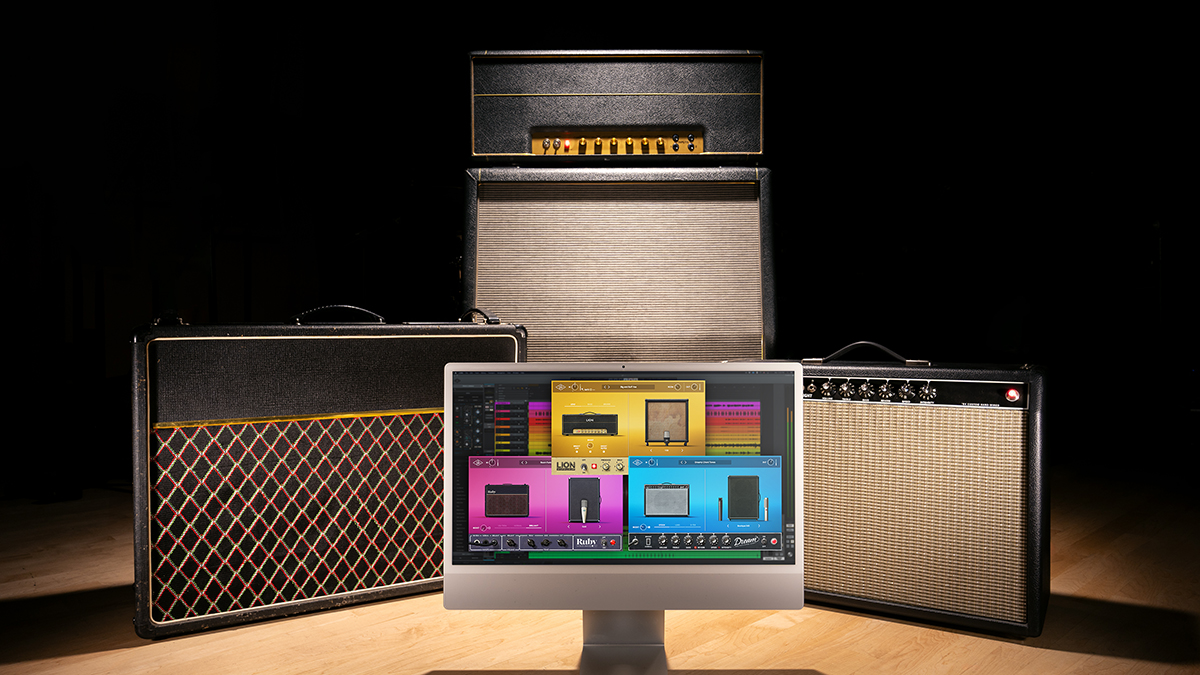
Any extras the pedals don't have?
The presets (some which are different to the pedals') are much more accessible on-the-fly than the pedals because you don't need a Bluetooth smartphone app to select them.
Don't I need a Universal Audio Apollo interface to run these plugins though?
All the latest guitar news, interviews, lessons, reviews, deals and more, direct to your inbox!
No, these do not need any UA hardware to launch but have to be launched via your DAW of choice – you can't launch these virtual amps for practice as standalone software.
Specs
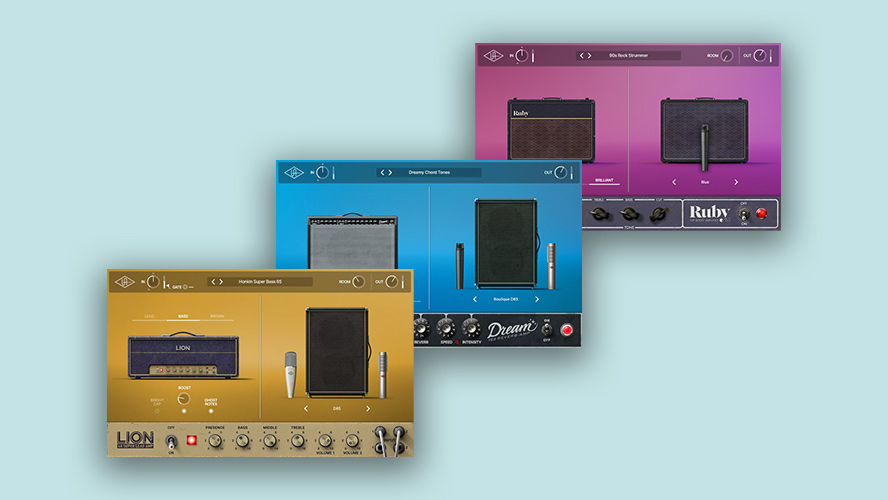
Launch price: $/£/€299 each / $399 for bundle
Type: UAD native Amp modeling plugins
Controls: Dream '65 Reverb Amp: Bright/Normal mode, Volume, Treble, Bass, Reverb, Speed and Intensity (vibrato), Boost level.
Lion '68 Super Lead: Presence, Bass, Middle, Treble, Volume 1, Volume 2, Bright Cap (Super Lead only), Boost, Ghost Notes, Room reverb, Noise Gate.
Ruby '63 Top Boost: Treble, Bass, Cut, Volume/Brilliant, Boost (EP-III with Normal amp mode/Maestro Rangemaster with Brilliant mode), Room reverb.
Features: Six speaker/Mic combos, 30 factory presets. Dream '65: 3x Boost modes (Stock, Lead, D-Tex), Bright cap. Lion '68: Lead, Bass and Brown amp modes. Ruby '63: Vib-Trem, Normal and Brilliant amp modes.
System Requirements: macOS Catalina 10.15, Big Sur 11, Monterey 12, Ventura 13, Sonoma 14, Sequoia 15. Windows 10 or Windows 11 (64-bit editions). Intel, AMD or Apple silicon processor. Supported DAW compatible with VST3, AU and AAX plug-in file formats. See here for a compatible list.
Contact Universal Audio
Usability
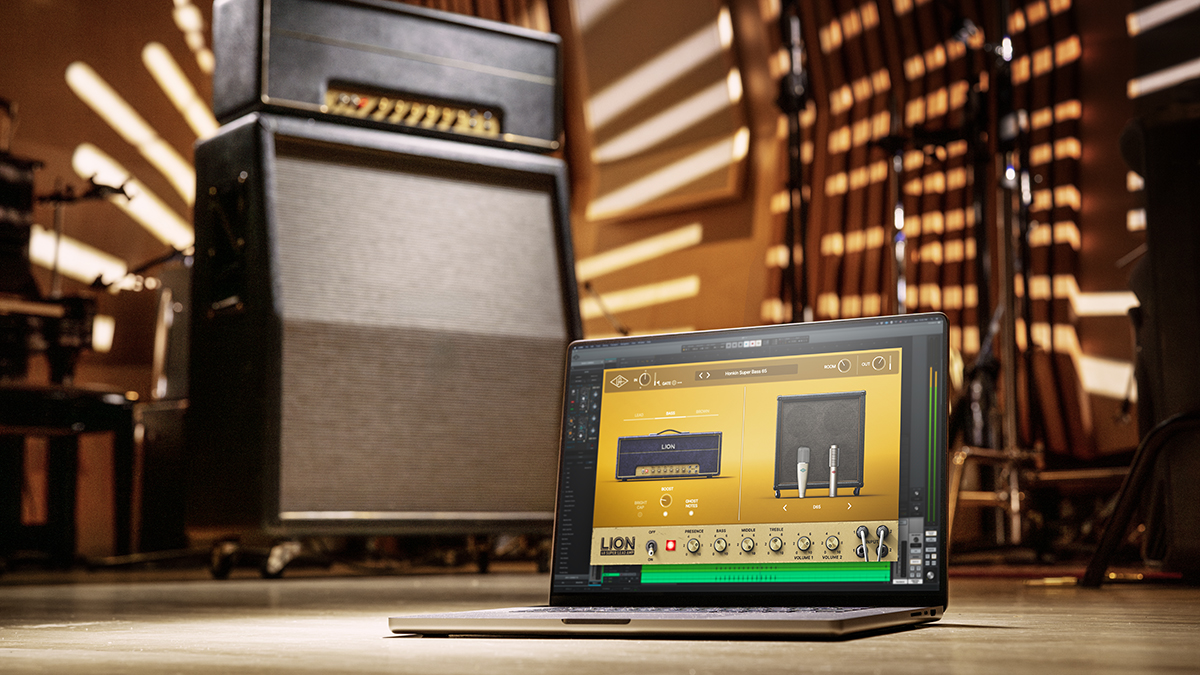
Unlike previous UAD amp plugins, these are the first to be offered native, so they use your computer's processing power to run rather than a piece of Universal Audio hardware – namely an Apollo interface. So immediately the company has opened up the access here to a much wider potential user base.
Neural DSP's native amp plugins can be launched and used independently, but this trio requires a DAW to launch them. So if you want to fire them up for a practice session through your headphones or studio monitor speakers, you'll have to run a compatible DAW first. UA's list of supported software includes Logic Pro 11, Ableton Live 12.1, Pro Tools 2024 and Cubase 14, along with FL Studio 2024 and the company's own Luna. Though it's not listed, I had no problems with the latest version of GarageBand (10.4.11) on my own MacBook Pro either.
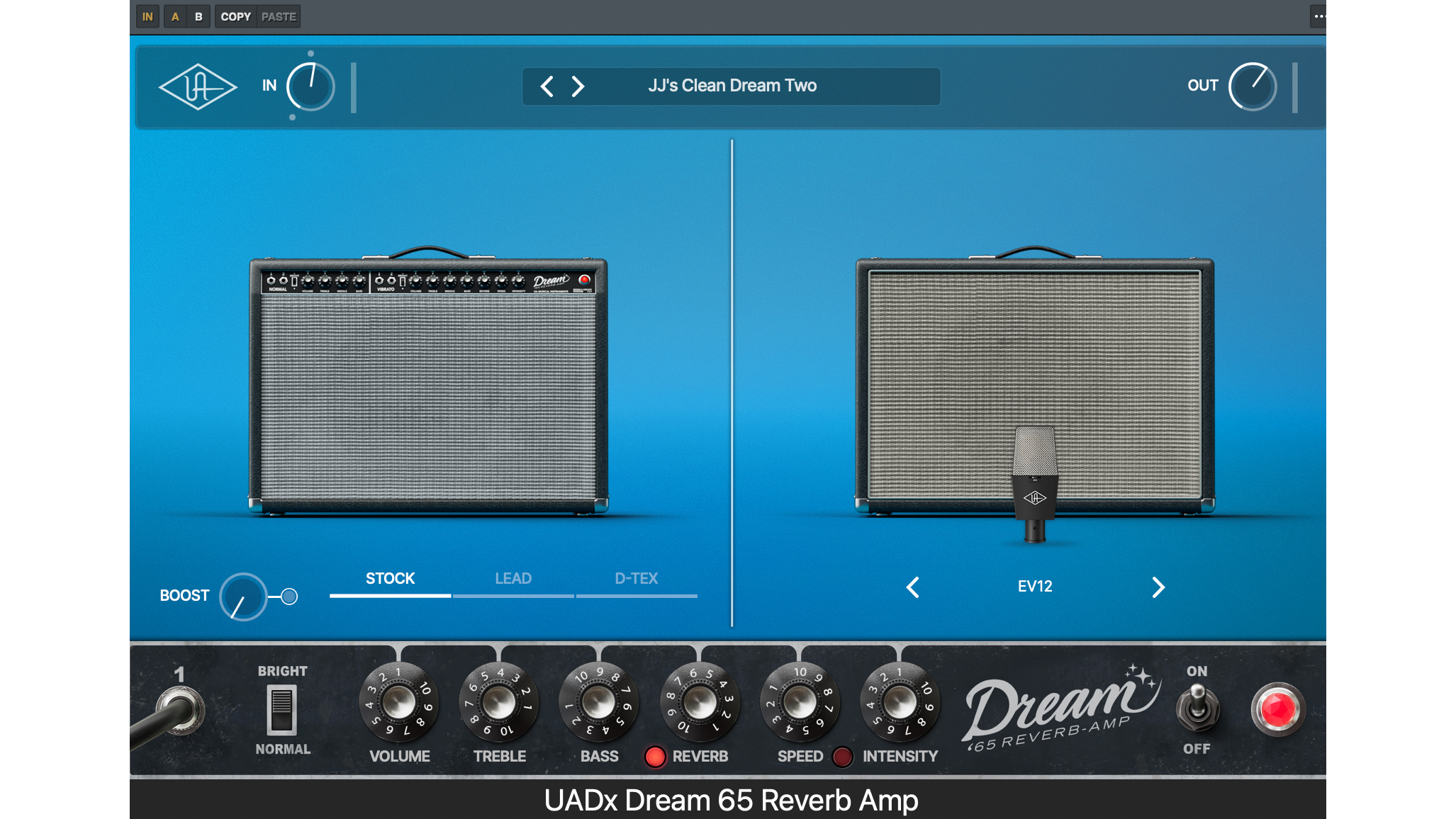
After using the pedal versions of these plugins, it's an interesting transition. If anything, it's easier to dial in and explore the sounds here – especially the comparative complexities of the Super Lead and AC30 sounds. For those coming from tube amps, the layout will be familiar and intuitive with the recognisable controls of the respective amps along the bottom of the screen and the amp mode and speaker selection represented above.
While the real amps obviously can't offer presets, those of the UAFX emulator pedals could only be accessed via the Bluetooth UAFX Control app. Here the 30 offered for each amp are just an arrow click away and soon become a hugely important launch point for me to explore the potential of these plugins. From clear nods to Jimi Hendrix songs and AC/DC's Young brothers from the Lion '68, to swampy vibrato and grit from the Dream and Queentastic drive and chimey clean from the Ruby, you can dive in and enjoy or tweak to make them your own and save to a custom preset.
It's a level of quick accessibility that I really can't overstate the importance of because it lowers the barriers of understanding what sounds these amps can deliver. You don't need insider knowledge on settings – choose a preset and note the controls. It's also an effective way to hear what impact the six speaker/mic combos for each plugin has, and a simple click allows you to audition alternatives. But try as I might, I just keep going back to the ol' faithful Oxford on the Dream '65.
The only drawbacks here that I see for those used to more wide open editability of amp plugins are the fact the ribbon, dynamic and condenser mic choices are tied to each of the six speaker emulations (you can also choose DI) and cannot be selected for the speakers independently. And for the sake of convenience and speed, I'd have liked to be able to launch these plugins independently from a DAW. Because they're not just a recording tool, as I discover.
Sounds
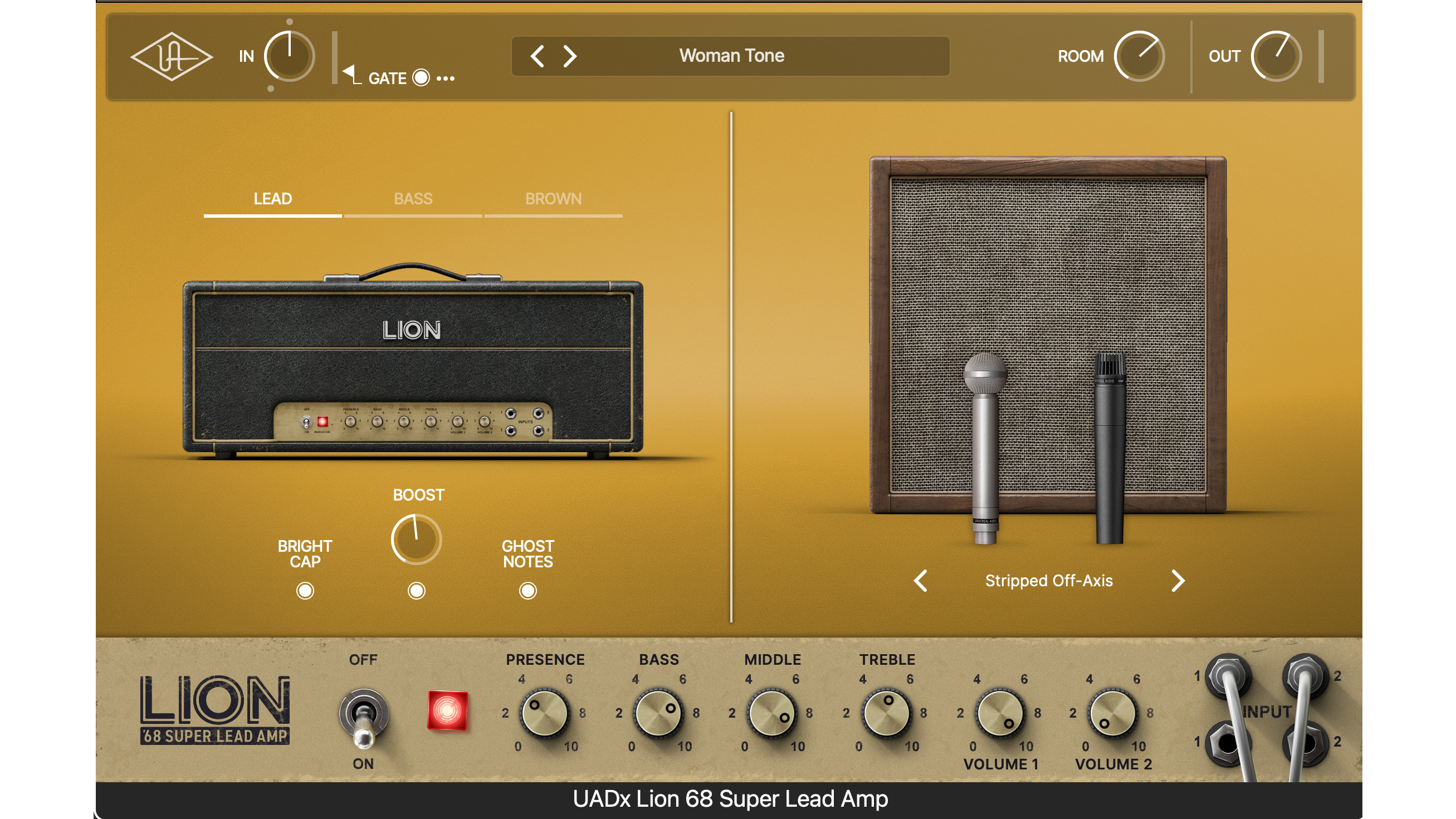
Inevitably the same things that impressed me about the Dream, Ruby and Lion pedals are the draw again here – but the experience is a little different
I'm going to go out on a limb, but one based on experience, and say the level of depth I have heard from Universal Audio's pedals, and the sense of feel and response I've got from them in a room and through headphones, puts the company at the forefront of tube amp modelling for me right now. It helps that its approach has focussed processing power on a specific amp each time, rather than trying to be all things to all players. Inevitably the same things that impressed me about the Dream, Ruby and Lion pedals are the draw again here – but the experience is a little different.
As I mentioned before, the presets being instantly available without an app really does give you a better understanding of why the original amps are so highly regarded. And in each case UA is expanding the experience to encompass mods and models. In the case of the Lion it's a Plexi amp fest with the Super Bass, Super Lead and EVH-inspired Brown mod, and the presets run the gamut across them.
The Ruby '63 includes the original spec AC30 alongside its later Top Boost iteration and a Vibrato-Tremolo mode that's great for brooding textures. The Dream '65 features three boosts that are inspired by specific mods from its history that saw it as a staple for session players –D-Tex is styled on SRVs mod by Cesar Diaz, Lead is the enhanced mid gain sound of the '80s 'OD Special' mod and Stock is a clean boost. The Dream's Bright cap is also only a click away, whereas on the pedal it involved connecting to the app and activating it on a smartphone. All of these features expand the versatility of the sounds, but the key here is quality.
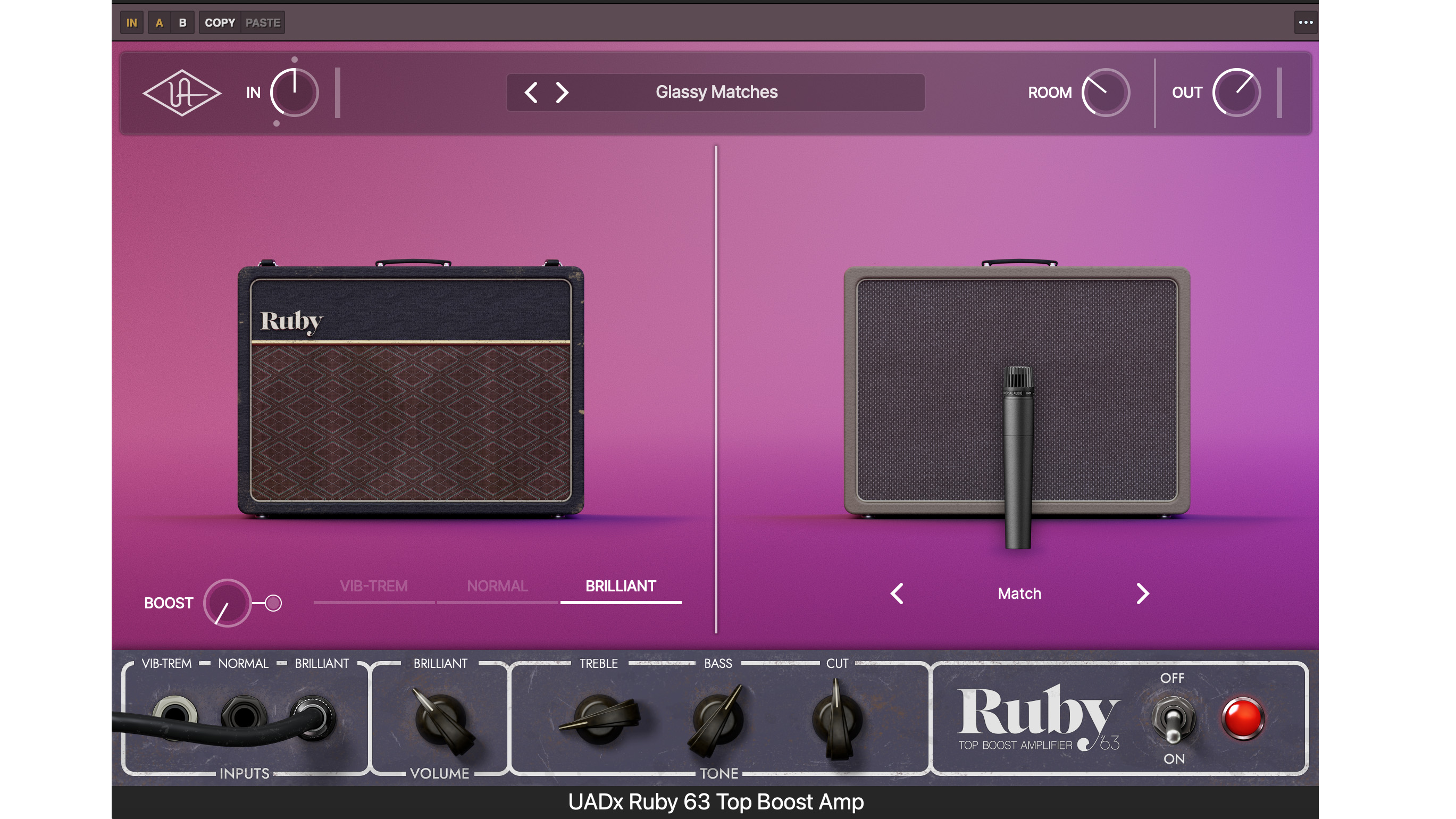
I didn't just discover excellent recording tools, but inspiring tones I wanted to use to just play for fun
I'm not a big amp plugin person beyond recording, but I know people who use them like practice amps every day use at home. My time with these three changed my playing habits. As I tried them out out my Tele, Mustang, SG and 1992 Gordon Smith G-1 through Yamaha HPH-MT7 studio monitor headphones and even going out to the recently released HeadRush FRFR-GO 30W portable cab, I didn't just discover excellent recording tools, but inspiring tones I wanted to use to just play for fun.
This is where I'd have liked to be able to launch them without a DAW for the convenience and flexibility Neural DSP plugins like its Tone King emulation offer. But like them, UA's offerings are great at low volumes. In ways the original tube amps simply can't be. This is a huge deal if you get your guitar kicks in the evenings after your kids are in bed. As self-contained virtual amps, they just feel right and perform extremely well if your laptop or desktop machine has become a creative hub for you.

How many of us will ever have get to plug into a real late '60s Super Lead or Super Bass?
For recording they're just such great tools to have at hand – even if it's just for overdubs over your existing tried and true favourites. It's like having thousands of dollars worth of vintage amps on call. They play nicely with the other reverb and delay plugins I tried them with, and I used the Dream plugin as a platform for my pedalboard, just as I have with the pedal version. You really need to keep the input gain on your interface from running too hot but I didn't hear any differences between pedal and plugin from my go-to edge of breakup setting.
How many of us will ever have get to plug into a real late '60s Super Lead or Super Bass? The sense of access here is a bit of a revelation as you can explore exactly why some players rate them as the greatest guitar amps ever made. The amp-in-the-room experience has the intimate response I look for too – it's in the sting and the crunch of you can lose hours in playing alone, and they clean up like the real thing. These representations of these classic amps will coax new voices from you as a player. It's really inspiring stuff.
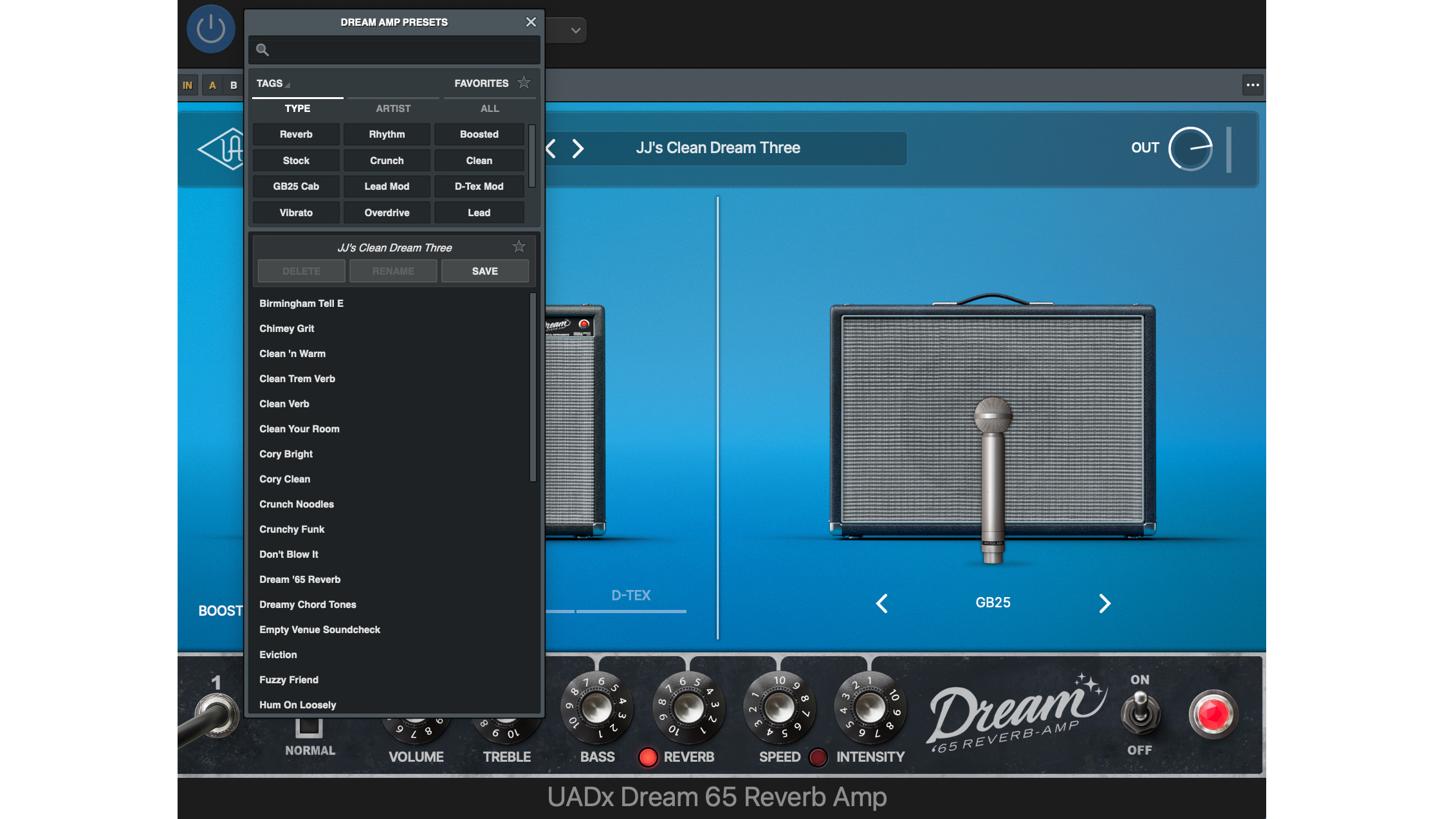
As UA has expanded these amps with boosts and mods, it would have been nice to see a couple of reverb options in addition to a room control for the Ruby and Lion (the Deluxe Reverb's highly desirable built-in spring reverb), and the Ruby especially would have benefitted from a noise gate like the Lion has.
The lack of option to move or swap out mics for the specific speaker cabs may also be lamented by those used to more configuration elsewhere. But the theme with UA and its modeling output so far really does seem to be curation – and the UA team helmed by Tore Mogensen and James Santiago have done a lot of work to ensure this is a digital love letter to these amps. It shows.
Personally, I don't seek the deeper edibility – I honestly prefer the quality over quantity of tweaking options here as I did with the pedals, and those that want to can bypass the speaker emulations to use third-party IRs, though with the added drain on CPU from running another plugin that may bring.
Verdict
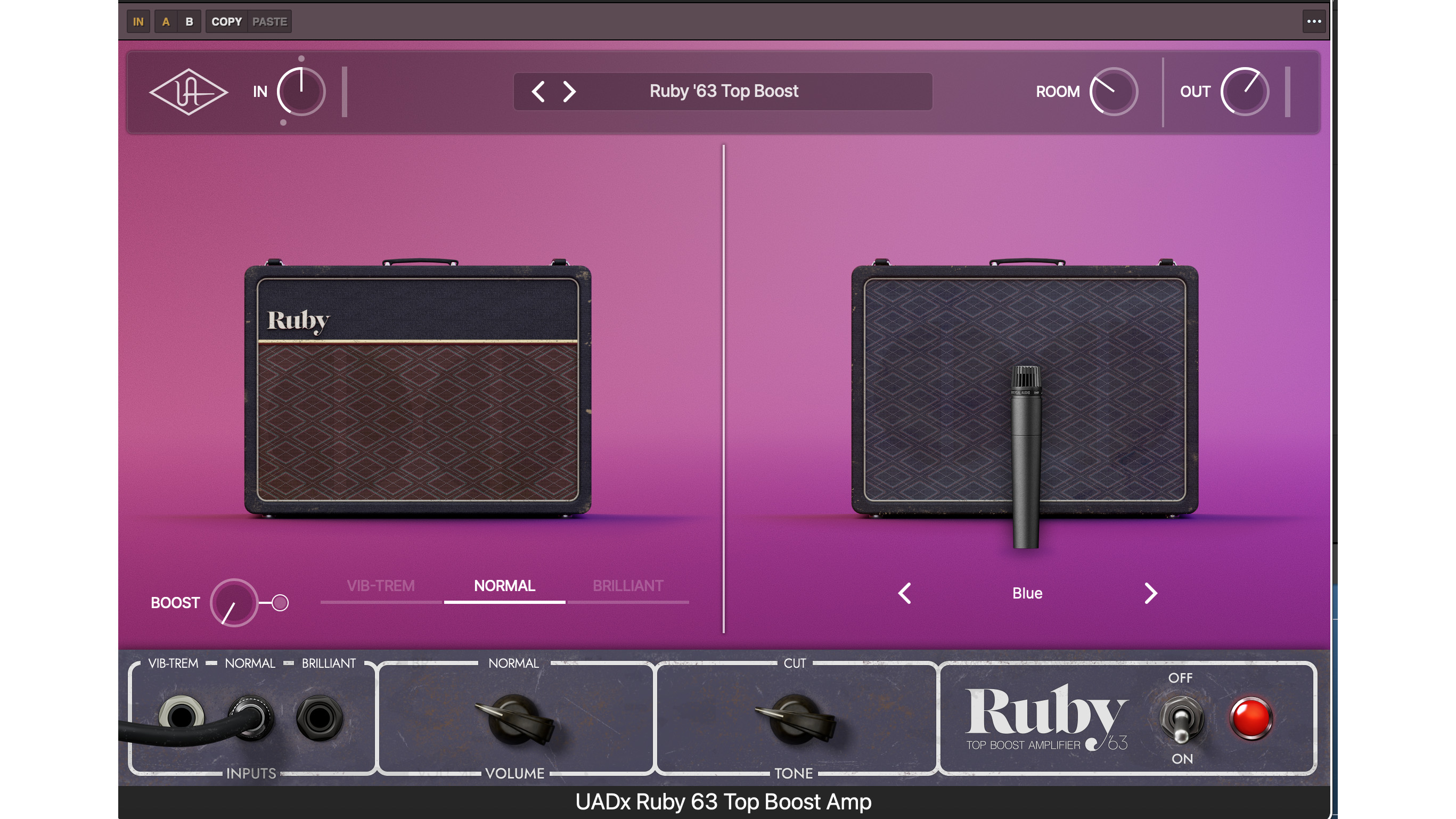
For the specific classic tube amps they model, these are currently the definitive articles when it comes to plugin choice right now – and I'd argue the same for their pedal versions that use the same algorithms. Usability-wise, I actually prefer the plugins for home playing because of the headphone experience – I think the absence of a headphone out on the pedals was a mistake from UA. Are these plugins worth $/£299 each? No, I think that's too much for a single amp plugin – however good. You can nearly buy one of the pedals for that. But there's a twist in the tale here.
These plugins are cheaper when bought together and are frequently discounted further – sometimes by a significant amount. So the full RRP is really not the full story here, and I'm factoring that into the review score. You can try each plugin free for two weeks to see and hear if they're suitable for your needs.
The appeal of simplicity in the user experience when dealing with such rich and nuanced amp sounds is definitely a selling point for me
Existing UA Apollo owners will be disappointed there aren't yet Unison versions that take advantage of the designated slot on their hardware. Native versions obviously open up a bigger potential user base – perhaps people who haven't investigated amp plugins before. The UI is certainly a lot easier to approach for newcomers compared to the much more featured likes of AmpliTube. The appeal of simplicity in the user experience when dealing with such rich and nuanced amp sounds is definitely a selling point for me. It meant I could focus on exploring and playing.
I am struck at how well these plugins interacted with the guitars I tested them with – cleaning up especially well to explore dynamics. Blues fans will especially enjoy this side of the Lion '68. The Dream '65 boasts the best representation of a vintage Fender Deluxe's spring reverb tank I've heard from a plugin, and the Ruby is the benchmark for AC30 modeling for me. It's actually an excellent gateway to Vox. There's a lot to enhance your recordings and be inspired by here.
Guitar World verdict: All the tonal delights of UA's amp pedals with a friendlier user experience makes these the greatest plugin versions of three of the greatest tube amps in history. Just don't pay the steep full retail prices, ok?
Thomann is currently offering the best price we've found on the Universal Audio Ruby '63, Dream '65 and Lion '68 amp plugins with this HUGE saving on buying all three as a bundle today. We don't think this sale price will stick around for long though.
Hands-on videos
John Nathan Cordy

Universal Audio

Rob has 20 years of experience writing, reviewing, interviewing and editing for guitar magazines and websites, including Guitarist and Total Guitar.
Over the years he's interviewed artists including Metallica, Black Sabbath, Pearl Jam and Soundgarden, but he's lost count of all the guitar gear he's tested.
He's now Reviews Editor for GuitarWorld.com, Guitar World magazine and MusicRadar guitars, heading up our in-house reviews team to give you in-depth and honest tests of the latest guitar gear. He eats and dreams reviews.
